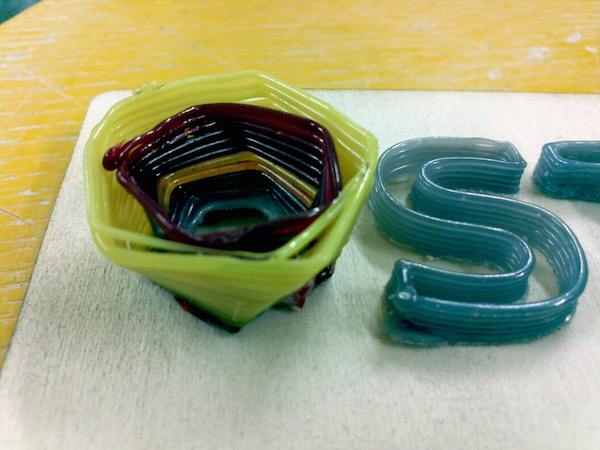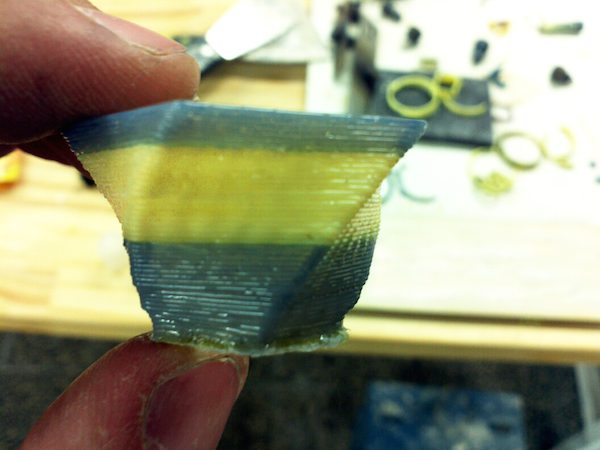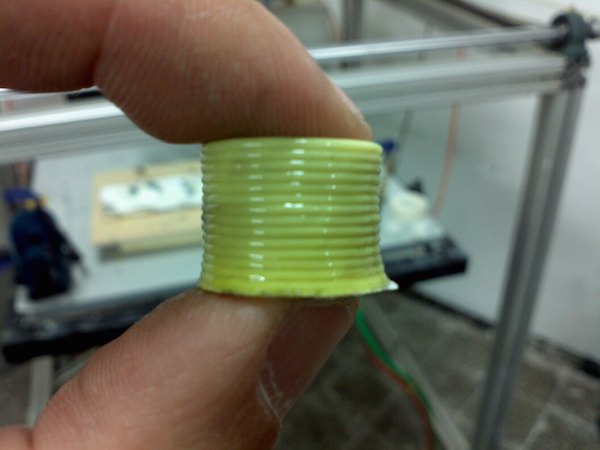
If you thought there was anywhere that 3-D printing couldn’t go, you better sit down—you’ve got some re-thinking to do.
The additive manufacturing revolution has infiltrated seemingly everything, including concrete, electronics, aerogels, cars, and even chocolate.
Micron3DP (Hod Hasharon, Israel), a 3-D printing company that develops and builds all-metal extruders, has now successfully experimented with advanced 3-D printing methods for what may be the final frontier in 3-D printed materials: glass.
“This is the first time that glass has been printed in liquid hot form,” according to a Micron3DP press release. “Micron had succeeded in printing ‘soft’ glass at a temperature of 850 degrees, as well as borosilicate glass at a melting temperature of 1640 degrees Celsius.”
According to an article on 3Dprint.com, Eran Gal-Or, R&D manager at Micron3DP, says that “Micron3DP made a successful 3-D printing test, and although efforts have been made in the past by other companies to print with this medium, this is the first time that glass has been printed in liquid hot form—and Micron has accomplished it by means of its innovative way of 3-D printing in an extremely hot extruder.”
The printer extrudes hot molten glass in single layers, which quickly harden before the next layer is laid down, to build up complex architectures.
Gal-Or says in an email that the company has a patent pending for the glass-printing technology, so it’s not yet releasing any further technical details or a glimpse of the printer in action.
According to the release, Micron3DP is “looking for a strategic investor for the molten glass-printing field, which is fast becoming the next HOT area.”
Another hot area for 3-D printing right now? The skies.
Next year, GE will incorporate 3-D-printed fuel nozzles into its LEAP jet engines. And 3-D printed components may soon revolutionize travel beyond Earth’s atmosphere, too. The European Space Agency just successfully tested 3-D printed monolithic ceramic thrusters for rocket engines. NASA has also successfully tested 3-D-printed advanced rocket engine thrust chambers printed from copper alloy materials.
With these innovations and much more, it’s clear that 3-D printing is taking to new heights. What was once a hobbyist pastime to make plastic prototypes and doo-dads is quickly becoming the means to manufacture complex components that can outperform their predecessors.
Despite all the progress and innovation in additive manufacturing, however, 3-D printing still hasn’t fully made it to the factory floor—yet. A new MIT Tech Review article suggests that high-speed sintering machines may be able to bring 3-D printing to the industrial masses in the near future, allowing the technique to compete with more conventional methods like injection molding.
Although material challenges still remain before high-speed sintering can viably make small complex parts in factories, it’s evident how quickly innovation in this area is progressing.
Tell us—what do you think will be next? Will the innovative trend continue?




